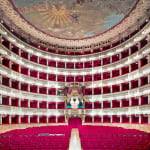
Candida Höfer German, 1944
Teatro San Carlo Napoli I 2009
C-print
200 x 285 cm. (78 3/4 x 112 1/4 in.)
Edition of 6 (#6/6)
Copyright The Artist
Further images
5
/
5
